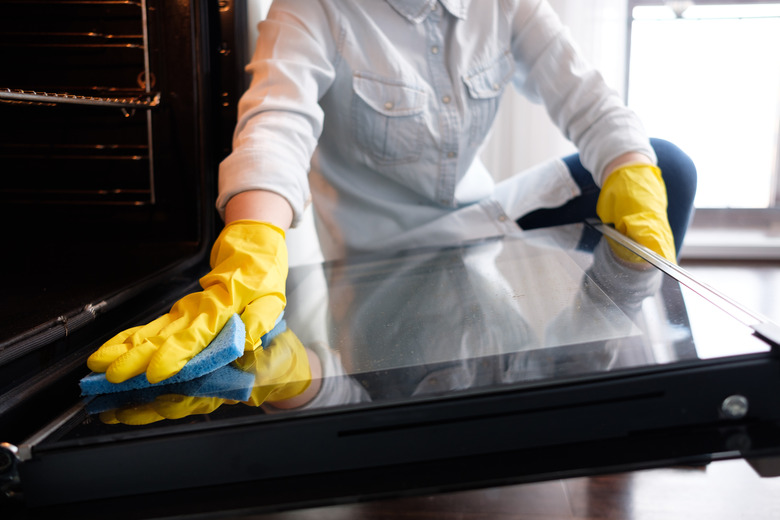How To Remove Heating Elements When Cleaning An Oven
The best way to clean an oven is also the easiest, and that's to use the self-cleaning feature. Turn it on, and the oven will heat up to a torrid 900 degrees Fahrenheit or so and do all the work for you by turning baked-on grease and gristle into a powder that you can simply sweep out. However, if you don't have a self-cleaning oven, there is no alternative to oven cleaning chemicals and a scrub pad.
The more often you clean your oven, the easier it will be each time you do it. To do as thorough a job as possible, you should remove the racks, thermometers and, if you have an electric oven, the heating elements. Besides getting in the way, the heating elements can vaporize chemicals you spill on them and fill the oven with noxious fumes. If they need cleaning, which they usually don't, it's safer and easier to clean them with mild cleaners in the sink.
Remove Oven Element for Cleaning
Remove Oven Element for Cleaning
The heating elements in any given oven may line the bottom, sides or top of the compartment, and in some models, any two of the above. The bottom element is often covered by a pan that's there to protect it from grease. To remove this element, you must first remove the pan. You typically do this by sliding it backward to unhook it and lifting it.
Removing the element involves unhooking electrical connections, so be sure to unplug the oven. If you can't do that, turn off the breaker in the main panel that controls the oven. Open the oven door as far as it will go and unscrew the element from the side or bottom of the oven. It's usually held by two or three screws, which are easy to turn with a Phillips screwdriver.
Once the element is free, pull it forward and pull apart the electrical connectors. If there is more than one, you might want to label the wire so you know how to reconnect them. They are usually clearly marked, so you probably don't have to do that. Once the element has been disconnected, you can remove it from the oven.
Cleaning Your Oven With Chemicals
Cleaning Your Oven With Chemicals
The best oven cleaner for baked-on grease, and the one recommended by Bustle, is Easy-Off, which contains sodium hydroxide, the caustic substance in commercial drain cleaners. It works well, or Easy-Off wouldn't be as popular as it is. But sodium hydroxide can damage painted surfaces and isn't best stuff to inhale. Krud-Kutter Oven & Grill Cleaner contains different chemicals, but they are just as noxious.
If you're looking for an eco-friendly commercial cleaner, Bustle recommends Grab Green Power Degreaser. Its list of ingredients is longer than that of other commercial oven cleaners, but all are naturally derived, biodegradable and noncaustic. Instead of emitting noxious fumes, it is fragrance-free.
Make Homemade Oven Cleaner
Make Homemade Oven Cleaner
You can make an oven cleaning paste using baking soda and water. Spread the paste on the grease build-up in your cool oven, leave it overnight and scrub it off in the morning. For extra cleaning power, fill a spray bottle with vinegar and water and use it to spray the paste when scrubbing. The combination of vinegar and baking soda makes a cleansing and deodorizing foam that helps dissolve the grease.
If you clean your oven often, good for you. That means you won't have much scrubbing to do, and you can use a weaker cleanser, such as lemon juice and water.
